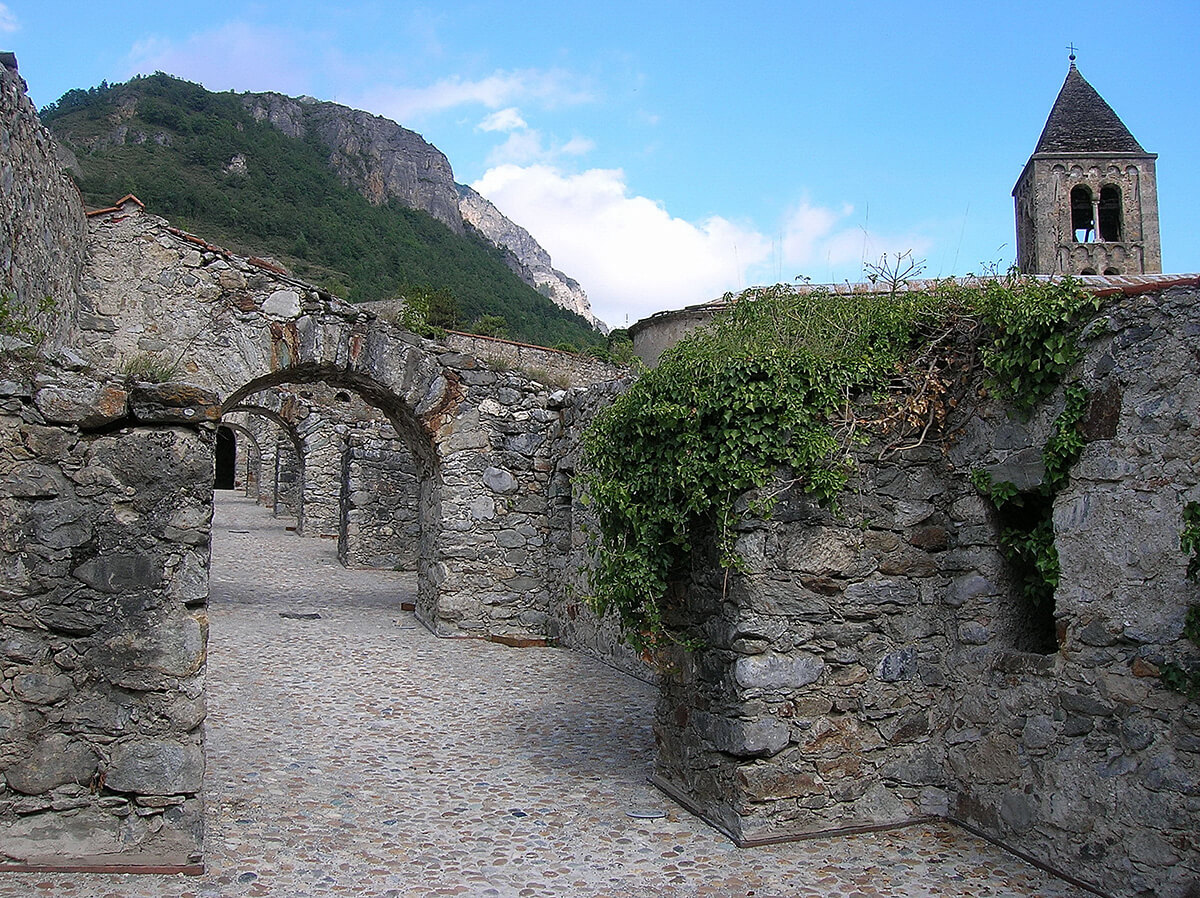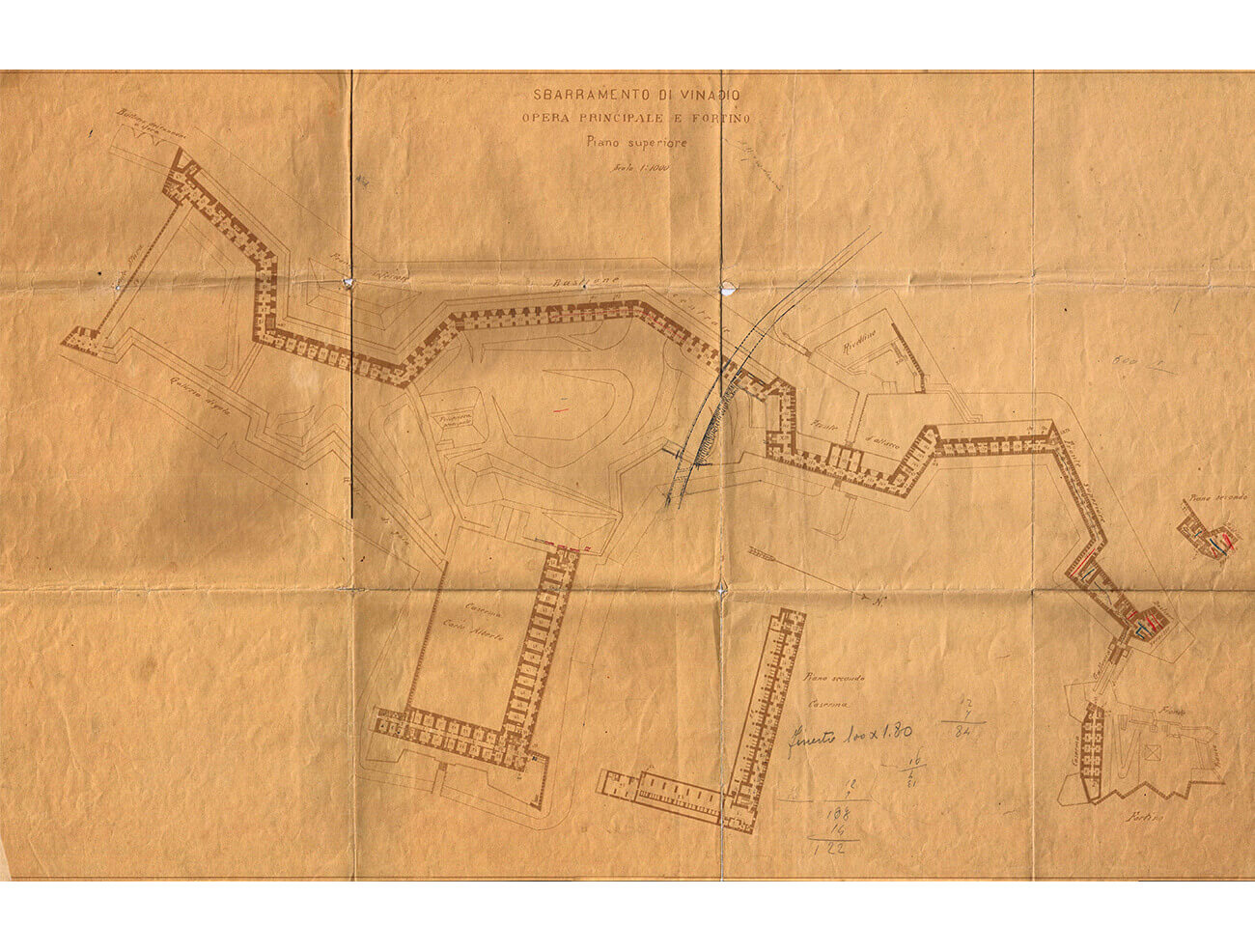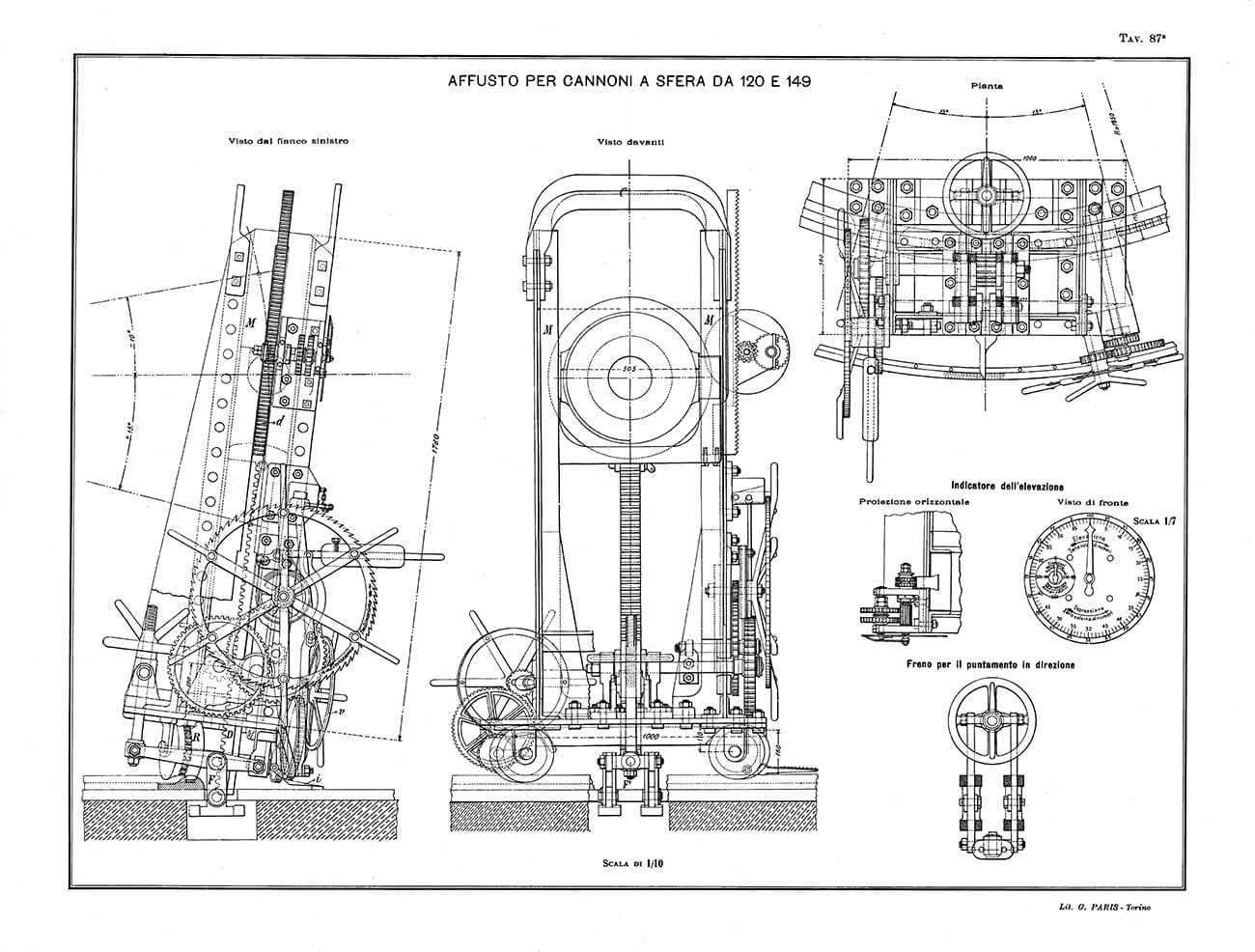The Fort on the way
The project
A walking experience in 360 degrees between nature, history and culture. An opportunity to know about the Fort and its history that enhances numerous hiking itineraries within the fortress and those who lead to its support forts.
The identification of the elements that constitute it, is also part of the knowledge of the Fort. For that reason, a signalling system has been developed, it permits to identify and recognise every part of the fortress, autonomously, simply walking. Scanning the QR code available on the sign holders or consulting the paper map, we are guided along a trail that tells us the historical and architectural happenings of the Main Fort.
The project has been financed by Fondazione CRC – Patrimonio Culturale (2020).
The Guide Walking through the Forts
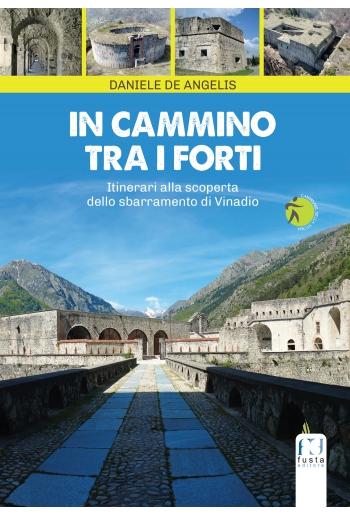
Looking for a responsible tourism, on a human scale, made of experiences and of contact with historical, cultural and environmental local reality, that guide was born. It proposes a series of itineraries of different difficulties that starting from the Main Fort, allow to discover and understand its most hidden part, its defensive system, thanks to the alternation of cartographic routes, vintage images and historical-didactic notions.
The guide “Walking through the Forts. Routes to discover the barrage of Vinadio”, curated by Daniele De Angelis, wants to be an alternative narration of the Vinadio Fort to discover and understand its most hidden part, his defensive system composed of Neghino, Piroat and Serziera Forts, in addition to the Sources, Testa Rimà and Punta Ciarnier Barracks. The above mentioned minor Forts are less known than the main one, but equally full of charm and situated in highly panoramic places. The proposed itineraries can be enjoyed with the guide on hand, to have an in-depth picture of the barrage system of Vinadio, or with the map, available for free, for a simple trip out of town.
Guided tour of the Fort
Routes to discover the barrage of Vinadio. Itineraries by bike or on foot from the Albertino Fort of Vinadio to its support Forts.
Neghino Gun Battery
It is one of the support gun batteries of the fort of Vinadio, built starting from 1875. The Neghino gun battery is the only defence of the right wing of the barrage of Vinadio.
The building has an elliptical plan on two floors, surrounded by a moat, about 7 meters wide. The total covered area of the gun battery is approximately 1,500 square meters.
The gun battery was armed with five 12 GRC Ret cannons and three 15 GR Ret howitzers to better beat the valley floor of the Neirassa valley; two other 15 GR Ret howitzers could have been positioned instead of the same number of cannons.
Continuing just upstream of the gun battery, past the small building which served as a wood storage sentry box, you reach the upper part of the Podio hill where, partially hidden by the vegetation, the occasional gun battery square for 15 G.R.C.
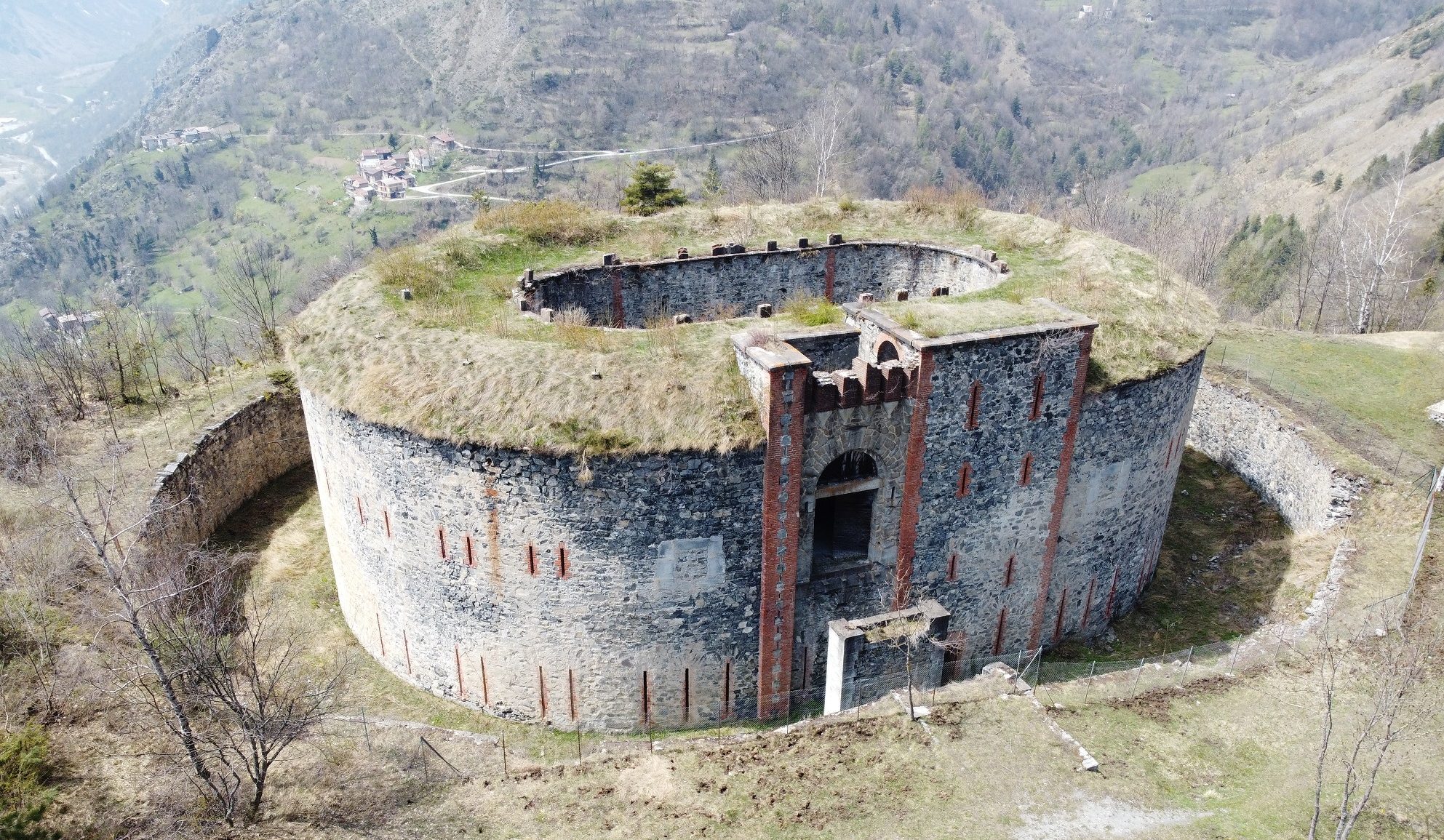
Ret mortars is located, with two small premises on the side that served as laboratories for packing cartons and loading bullets.
Just beyond the gun battery, built along the rocky ridge, there is the small shelter for the optical telegraph.
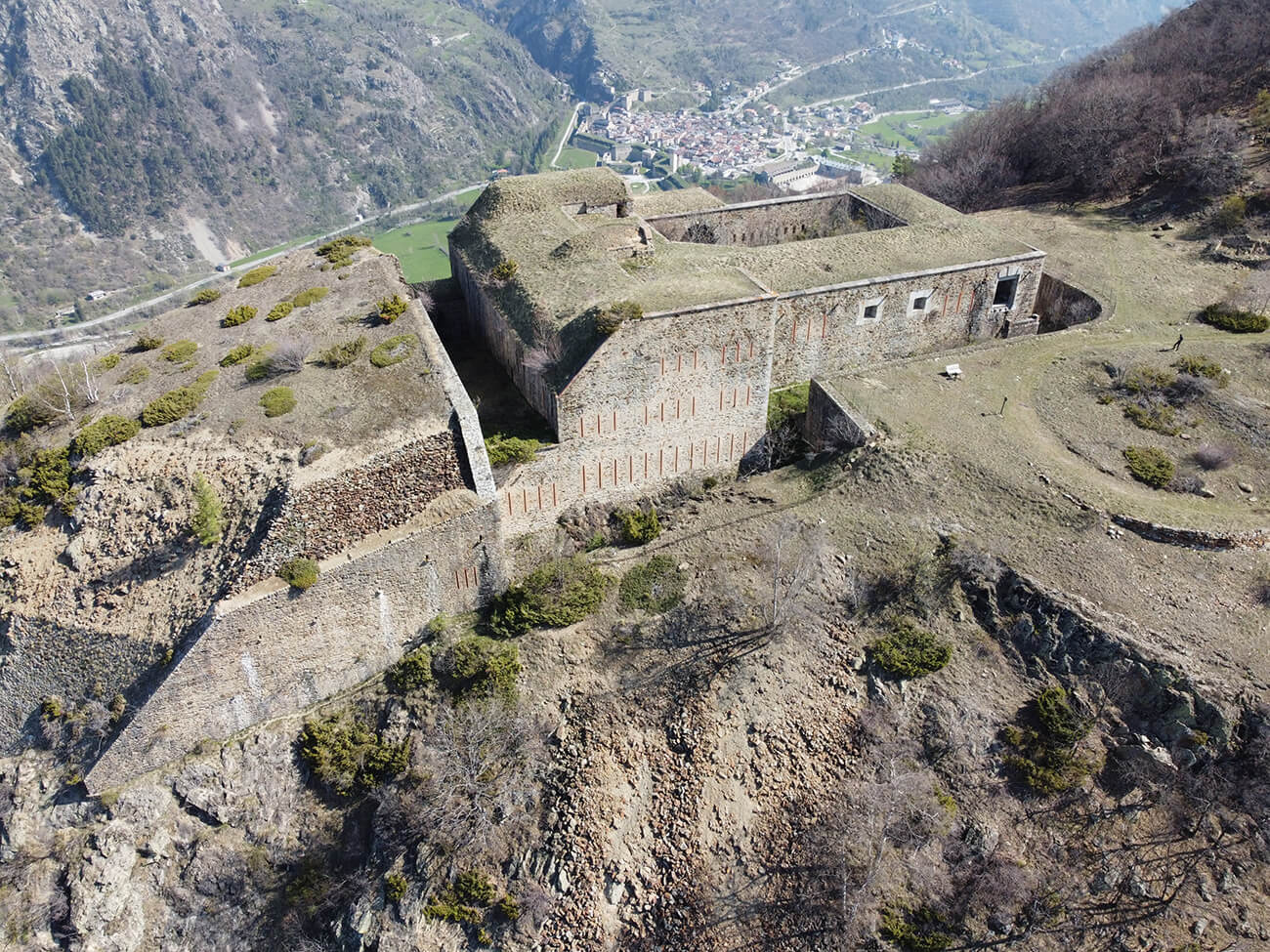
Serziera Gun Battery
The Serziera gun battery, built between 1885 and 1887, is a T-shaped construction, partly on two floors and partly on three floors, made of stone and lime mortar masonry, partially surrounded by a moat. Clearly visible from Vinadio, from the Neghino gun battery and descending from the upper valley, it had the task of beating with his artillery the sector immediately downstream of the Pianche narrows.
It was armed with four 12 G.R.C. Ret in casemate cannons, two of which with field of action towards the Riofreddo valley and two towards the end of the Neirassa valley, while the barbette gun battery for 15 G.R.C. Ret pieces had field of action towards the upper valley. The access and the handling of the pieces towards the barbette gun battery was done via inclined ramps inside the courtyard. Two Gardner machine guns were also supplied.
Piroat Gun Battery
It was created as an upgrade of the Serziera gun battery. The armament consisted of six barbette 15 G.R.C. Ret pieces. Behind the gun battery a staircase leads to the lower floor where there was the storage and the loading / fuse premises of the artillery shells.
Through a tunnel about 35 meters long and with an 8% gradient, you reach the esplanade at the bottom of which the entrance to the actual powder magazine opens. To facilitate the transport of heavy artillery shells, the tunnel was equipped with decauville; the lowered floor is still visible where the rails were positioned with the wooden sleepers wedged at the sides in the stone borders. The lower opening of the tunnel was closed by a sliding door. From here, it was possible to access service rooms, built in the trenches and used as a warehouse and an artillery laboratory.
Once out on the large esplanade in front of the service premises, you continue to the right and you will soon reach the entrance to the powder magazine, a large rectangular barrel vaulted room, with a concrete structure placed at the end of a long corridor.
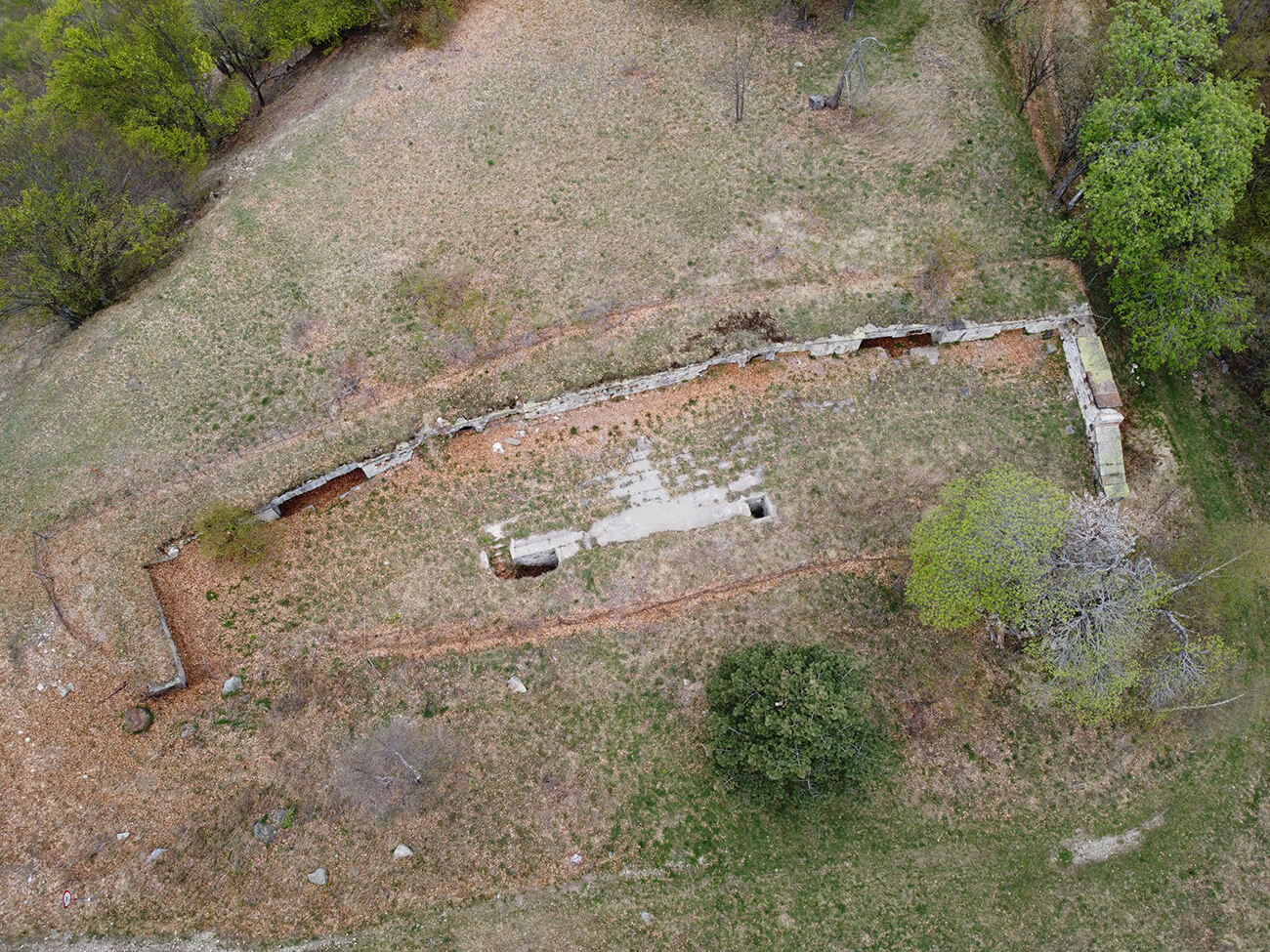
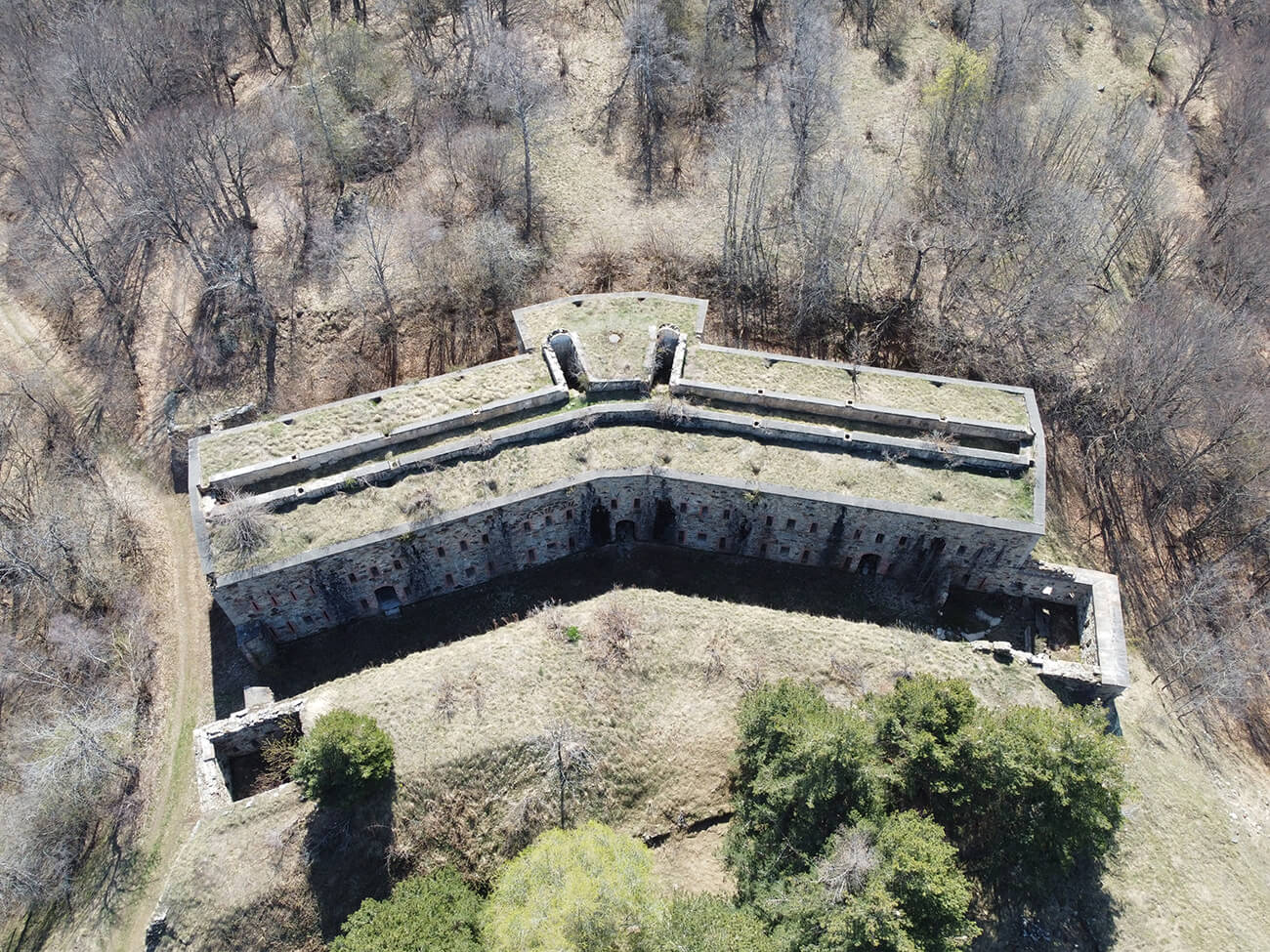
Defence Barracks Sources
It is a two floor building in a very open "V" shape, which had the task of completing the defense of the Serziera gun battery, by protecting it against any attacks from the Rio Freddo valley.
It was armed with two Gardner machine guns in casemate, with a field of action towards the Rio Freddo valley; the roof is shaped in such a way to be crossed in the middle by a walkway with high bastions on the sides, to allow rifle fire from a dominant position.
Itinerary inside the Fort
Routes to discover the barrage of Vinadio. Open visit to the Albertine Fort. Time of walking 1h.30.
1. Rivellino
Crossing the bridge over the moat again you reach Francia gateway, which leads into the portion of the fortification called Rivellino, a fortified outpost which had the function of protecting the extremity upstream of the bridge that crosses the moat and which, at the time, was the only transit route through the fort.
From the Rivellino courtyard you can see the main entrance of the fortification, protected by two heavy wooden doors, one towards the town of Vinadio and the other one towards the upper valley.
Originally, the bridge had a wooden deck on stone masonry pillars, later replaced by the masonry structure, which can still be appreciate today.
The entrance was protected by gunners, some of whom were modified over time to house Gardner machine guns and rifle shooting.
Once out the main entrance of the fort, turn left, take the steep stone staircase and continue along the moat.
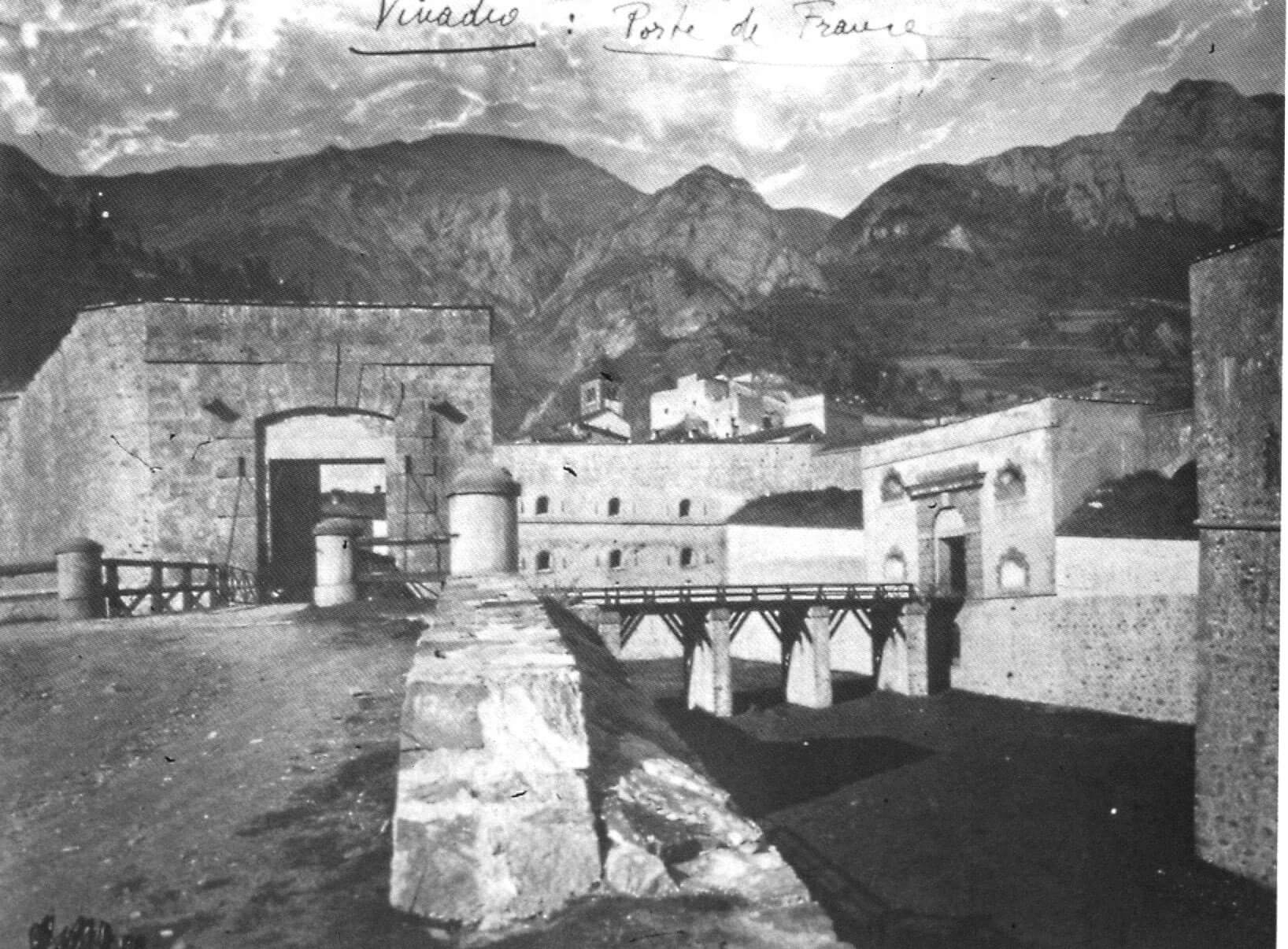
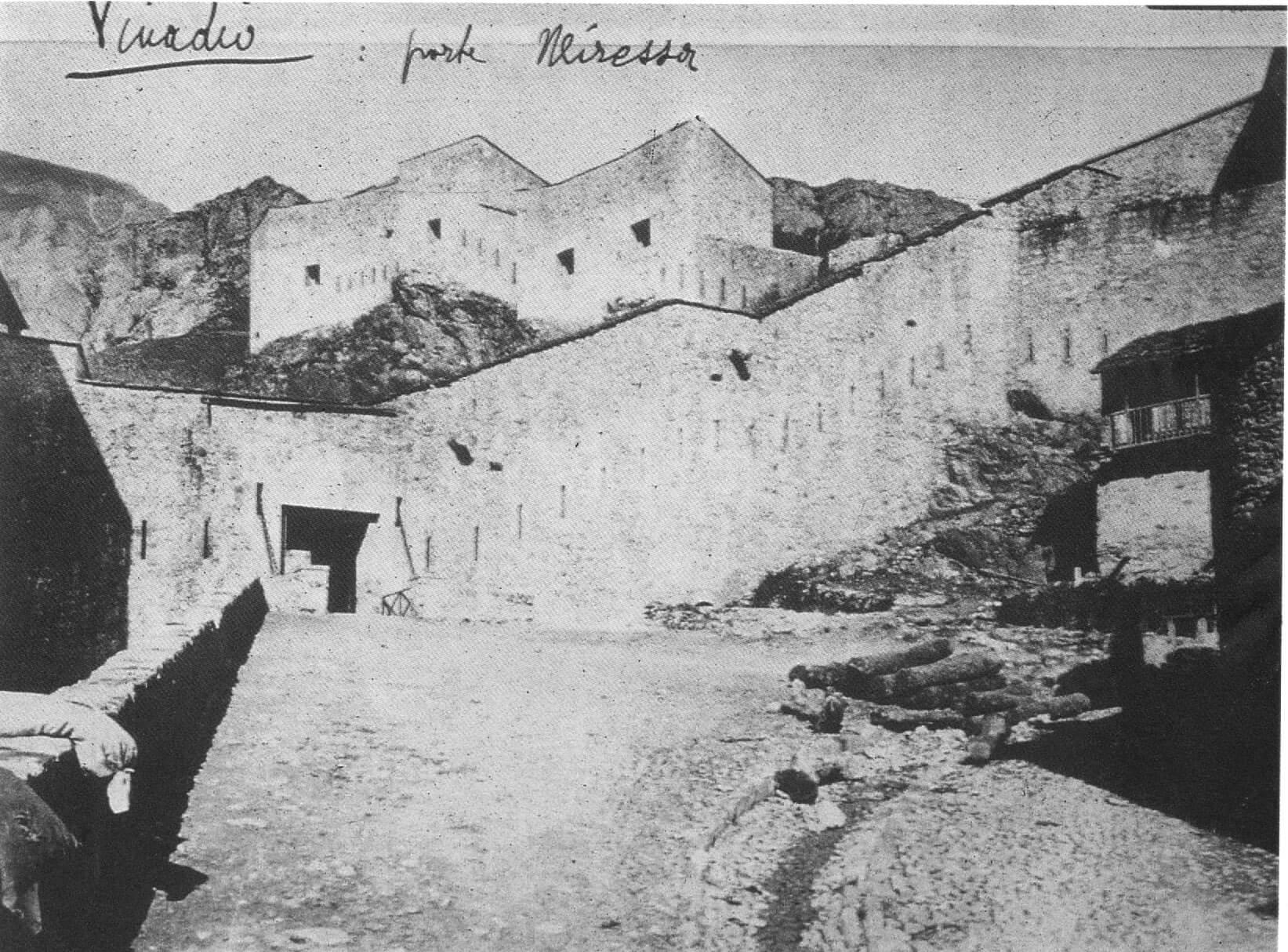
2. Gateway Neraissa
You coasted the first stretch of the moat along the town of Vinadio; observing the exterior part of the upper front, facing the town of Vinadio. Not being the side from which the impact of the enemy attack was expected to arrive, there are only slits for rifle shootings.
Past the village church, you reach a small clearing before the passage upstream from the fort, gateway Neiraissa, the last part of the upper front.
To reach the sign holder 3, you have to turn right (Via Giordano) and to continue into the narrow alley along the lower part of the "small fort".
3. The Small Fort
The “small fort” is the highest part of the fort of Vinadio. It is connected to the rest of the fortification by a steep staircase which starts directly from Neraissa gateway. However, there is a main entrance at the main building of the small fort, connected with a branch of the road that leads towards the Neghino gun battery.
Initially, it was the seat of the command of the fort, later moved to the Carlo Alberto barracks. There was also the infirmary, including a surgical unit and quarantine premises for any infected personnel. Following the move of the command, the premises were occupied by the military dovecote.
To learn more about this topic, we recommend a visit to the permanent exhibition "Winged Messengers", inside the exhibition rooms of the fort.

4. Command Cave
In 1939, the fort of Vinadio, which since the first post-war period had basically been used as a warehouse, was incorporated into the “14th Vinadio Stronghold”, part of the largest system of permanent fortifications, called Alpine Fortification.
In 1940, works also began for the construction of the command cave for the “G.a.f. III a subsector ”right in Vinadio, near the small fort (the one for the“ subsector III b ”was located in Sambuco and was slightly different, as it also had an observatory).
Access is only possible with guided tours.
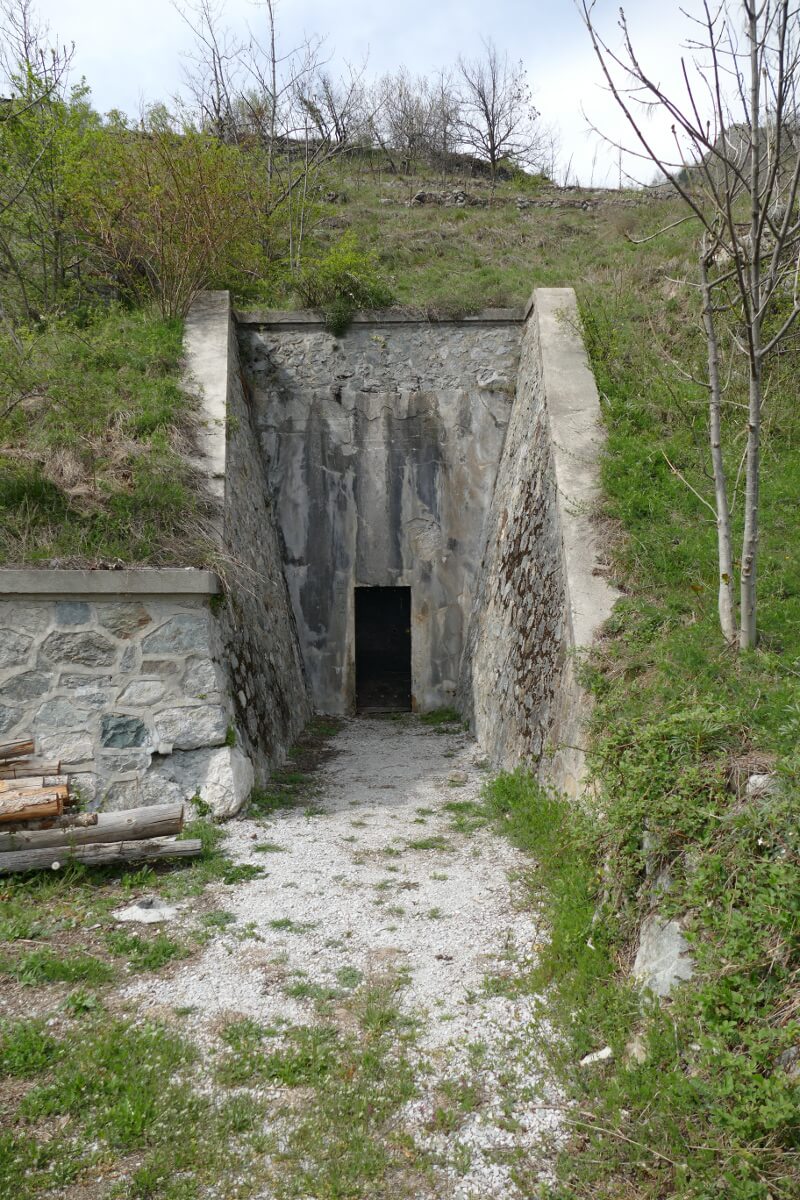
5. Carlo Alberto Barracks
We are in front of the entrance of Carlo Alberto Barracks, headquarters of the Fort command after its transfer from the "small fort". It is a large structure which develops planimetrically around a rectangular courtyard. On the northern and eastern sides you can see the main two floor building while, on the remaining short side, there is the church.
The structure is protected on two sides by a moat; at the two ends of it, there are two defensive tambours. The access was further protected by a drawbridge, like all the entrances to the fort.
During the First World War, part of the premises on the second floor were transformed into cells for Austro-Hungarian prisoners.
The corridor of the entrance has recently undergone a roof restoration. The large breach in the perimeter wall, on the courtyard side, was caused by the fall of a concrete block from the vault of the powder magazine, which had been blown up in 1945.
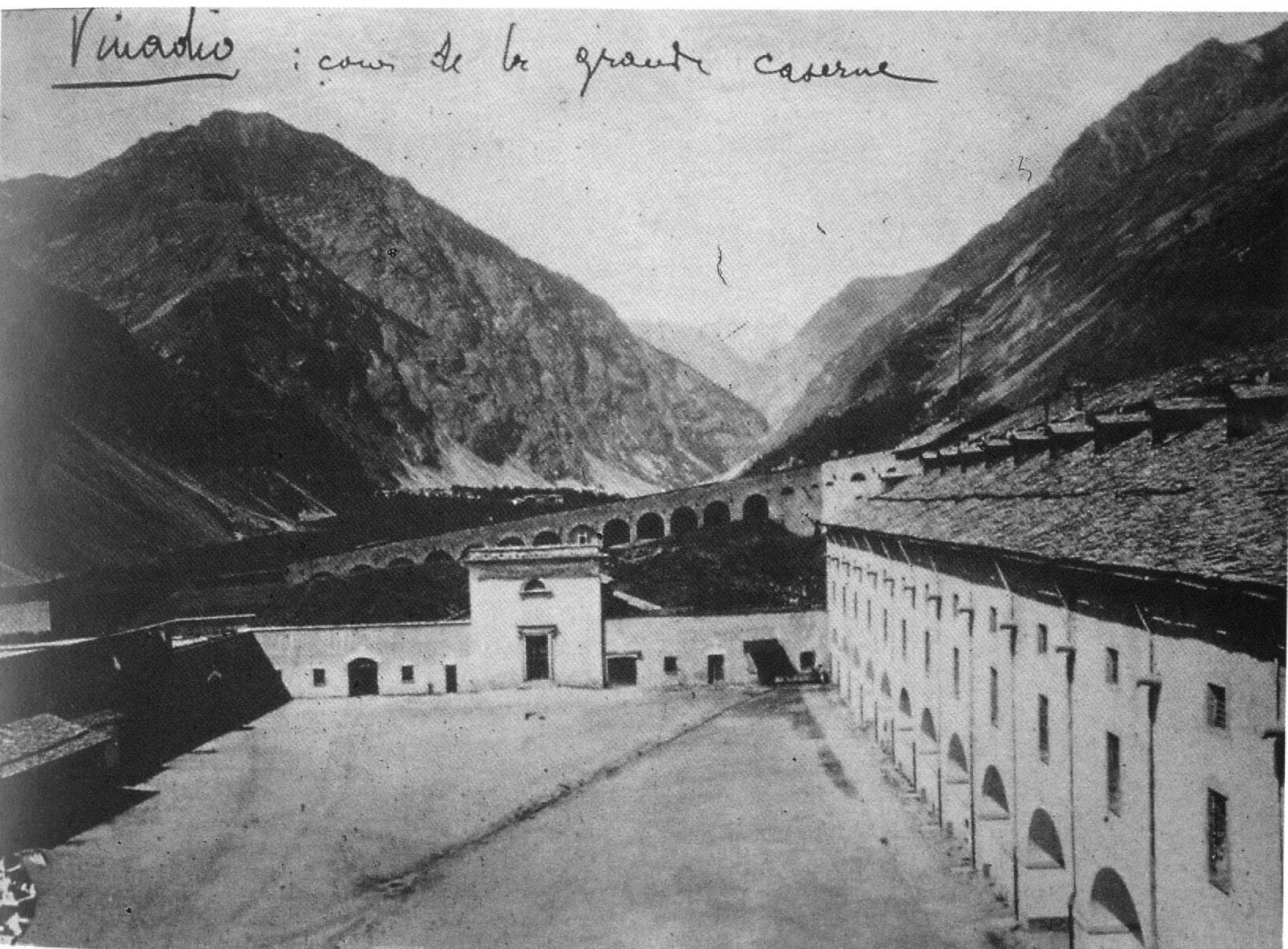
6. Powder Magazine
The large open space behind the central bastion was occupied by the main powder magazine of the fort, which had been blown up by the retreating Germans in April 1945.
The structure consisted of a large central room with a rectangular plan surrounded, along the entire perimeter, by a corridor with a distributive function, as well as a protection from humidity, as it favoured the recirculation of air. Inside, the room where the explosives were stacked, was completely covered in wood, as an additional protection from humidity.
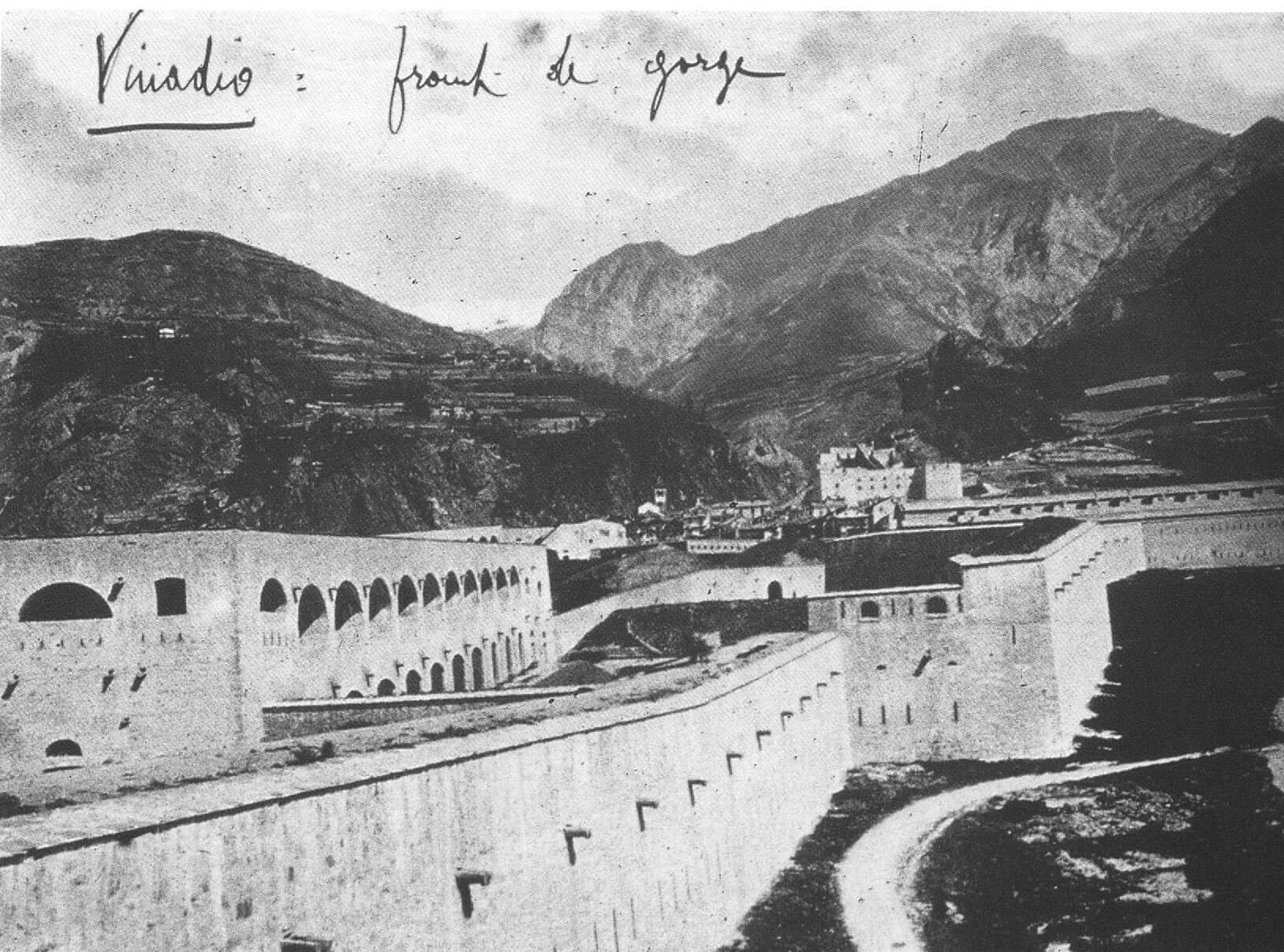
7. Casemates
Starting from 1939, the fort of Vinadio, which after the first post-war period had been basically used as a warehouse, was partially reused within the wider defensive system of the Italian border, called "Alpine Fortification".
Some nineteenth-century casemates were modified to house machine guns or anti-tank pieces.
On one of these, there is a fresco portraying a soldier who, holding the Italian flag in his left hand and the rifle in his right one, takes wide strides towards the border to contrast the passage of the enemy. The character is taken from an illustrated postcard of the time.

8. Stura Front
We are located in the lower part of the fort of Vinadio.
It is a long building characterized by a sequence of large quadrangular chambers at the sides of which there are a series of openings, for rifle shooting.
Also in this portion of the fort, two premises were transformed in 1939 for the installation of an anti-tank unit and a machine gun.
Continuing along the asphalted road, you go up towards the mountain along the walls of the “Galleria di Gola”, the connection between the Stura Front in the lower part, and the Central Bastion in the upper part.
It is characterized, in the upper part, by a long protected walkway that can also be used for the handling of artillery pieces while, in the lower part, there are casemates which were used as shelters for troops with a total capacity of 270 men.

9. Gunboat
The low building with one floor above ground, a stone structure and a rounded concrete roof, is the last part of the building in the fort of Vinadio, created to house two casemates for 15 cm cannons in a sphere installation, the last attempt to extend the useful life of the fortress, through a very expensive "technological upgrade" of its artillery casemates.
The installation was not replicated in other Italian fortifications.
To reach the next sign holder continue uphill, going up the moat that first coasts the inferior front, and then the central bastion.
In correspondence of the inferior front you can observe on two casemates the repairs carried out after the execution of the test firings to investigate the resistance of the stone structures, shooting experiences that led to the realisation of the sphere battery described previously.
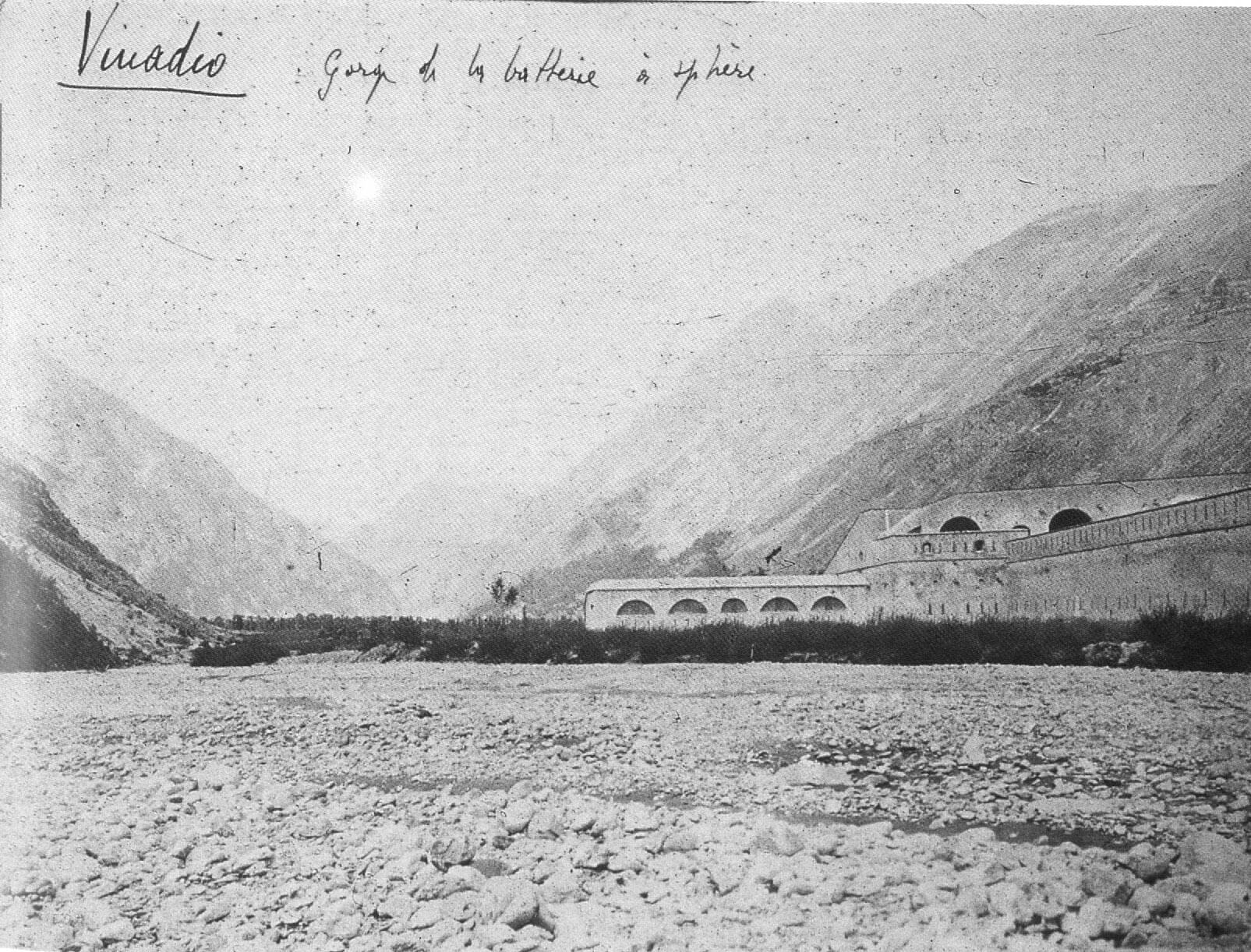

10. Moat
The itinerary ends in correspondence of the bridge built in 1927, when the defensive function of the fort had then ceased. It was therefore decided to rectify, within the town of Vinadio, the route of the national road towards the Maddalena hill. For this purpose, a portion of the fortification was demolished and a bridge was built to cross the moat.
We are at the so-called "central bastion". Crossed both bridges, on your right through a stair, you can return at the starting point.

